Practise using the addition compensation strategy with this fun interactive activity.
Get Climbing to Addition Compensation Strategy Success
In the early stages of learning addition, young children benefit from various strategies to develop a solid foundation. One strategy is the compensation strategy, an effective mental maths technique that encourages students to round numbers to make a number sentence easier to solve.
This interactive activity aims to engage students in a hands-on learning experience reinforcing the addition compensation strategy and promoting their mathematical fluency and understanding.
Tips for Extension and Support
We know that teachers are doing their absolute best to provide differentiated instruction for the diverse needs of the learners in their classrooms. To help you achieve the next outcomes for your learners, here are some ideas for how you might differentiate the application of this resource.
- Extend Your High Fliers: Write further addition problems on the class whiteboard and have more-capable students complete them using the compensation strategy.
- Support Your Less-Confident Students: Allow students to use maths manipulatives to help them with this concept.
Teaching About the Compensation Strategy Has Never Been So Easy!
Use the dropdown menu next to the Download button to choose between the Microsoft PowerPoint or Google Slides version of this resource.
Be sure to use this presentation in Slideshow mode to enable the interactive features.
This resource was created by Lindsey Phillips, a Teach Starter collaborator.
Working on more addition strategies? Here are some other fab resources to boost your lessons:

teaching resource
Split Strategy Addition Dominoes
A set of addition dominoes to use in the classroom when applying the split strategy.

teaching resource
Addition Turnarounds Flip Flop Task Cards
Develop number sense with addition turnaround facts to 20 with these cute flip flop fact task cards.

teaching resource
Split Strategy Interactive Activity
Practise using the addition split strategy with this fun interactive activity.
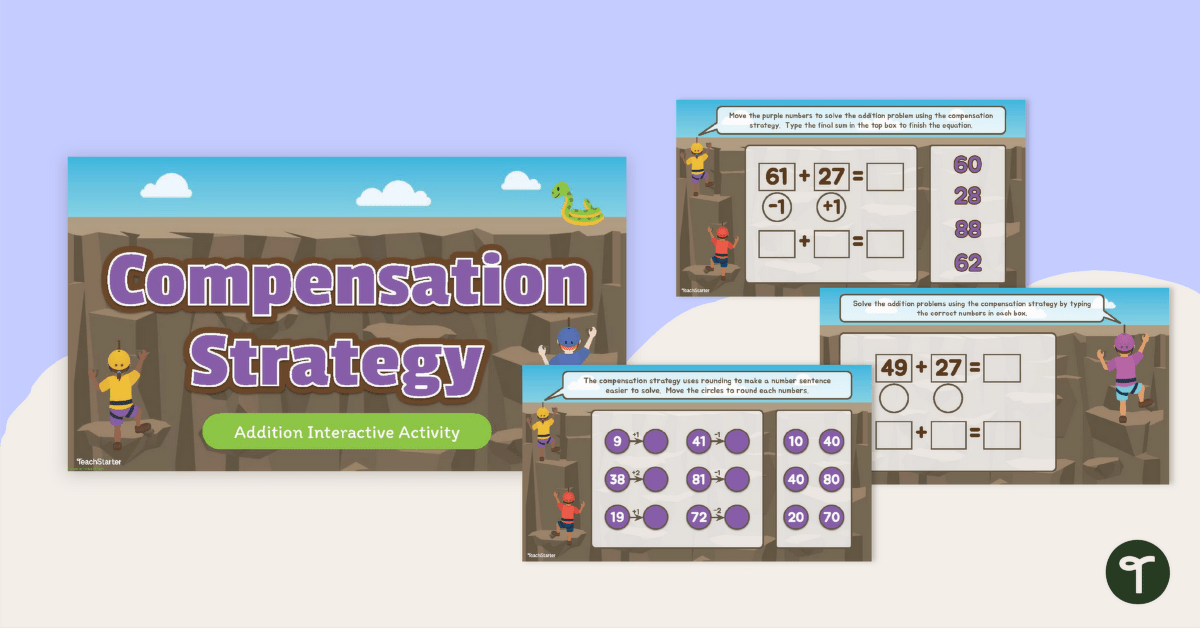


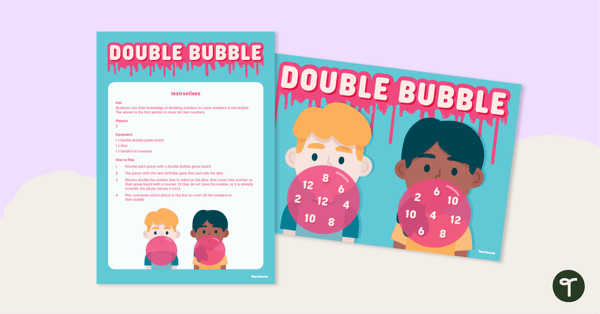
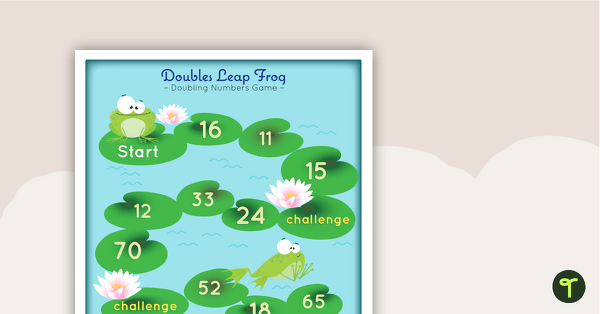
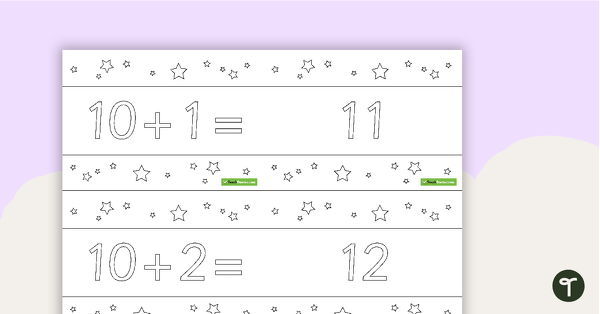
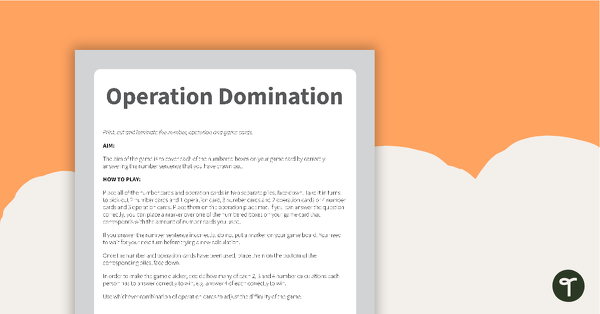
it doesn't seem to be interactive for me. Am I downloading it incorrectly?
Hi Gill, thanks for reaching out! Please ensure to use this presentation in Slideshow mode to enable the interactive features. If you need further assistance with this, please don't hesitate to reach out to our support team via the chat icon at the bottom of the page. Thanks!
This is the bridging strategy, not compensation.
Hi Gin, thanks for raising this! These strategies are similar, however there are some key differences. The compensation strategy involves rounding one (or more commonly both) of the numbers up or down and then adjusting the results accordingly. For example, when adding 48 + 37, you could round 48 up to 50 and 37 up to 40, and make the calculation 50 + 40 = 90. Then, you adjust for the rounding by subtracting 5 (the difference between 48 and 50 and 37 and 40) from 90, resulting in 85. The bridging to or through ten strategy involves decomposing one of the numbers into parts that equal 10, then add the remaining parts. For example, when adding 58 + 7, you can decompose 7 into 2 and 5 and add the 2 to 58 to make a ten, which equals 60. Then we add the remaining 5 to 60, resulting in 65. Thanks!